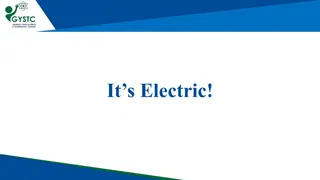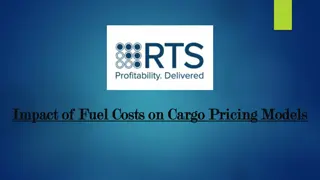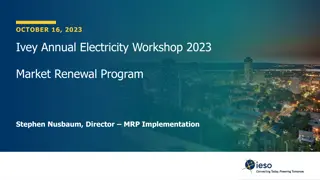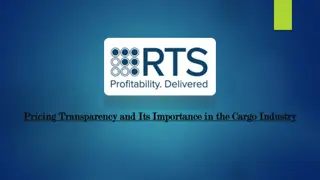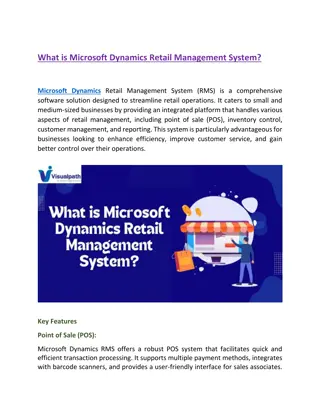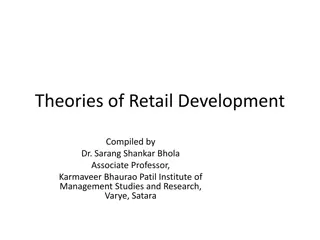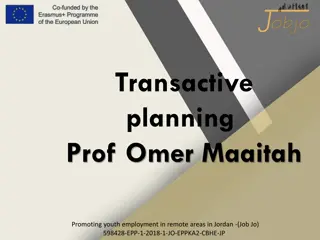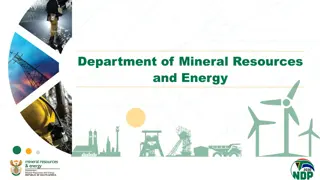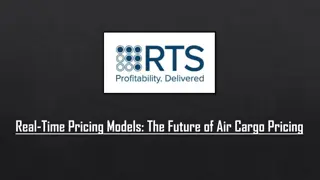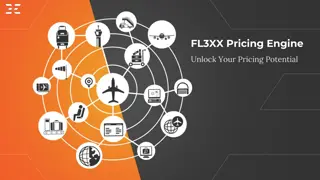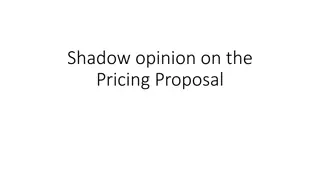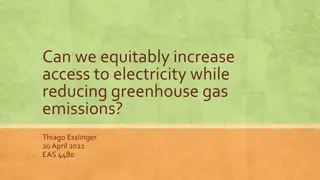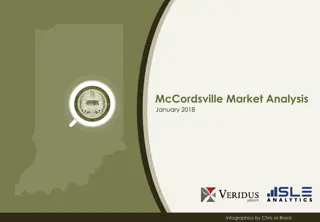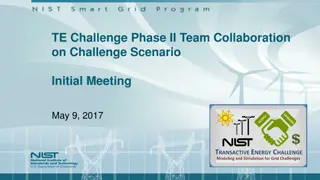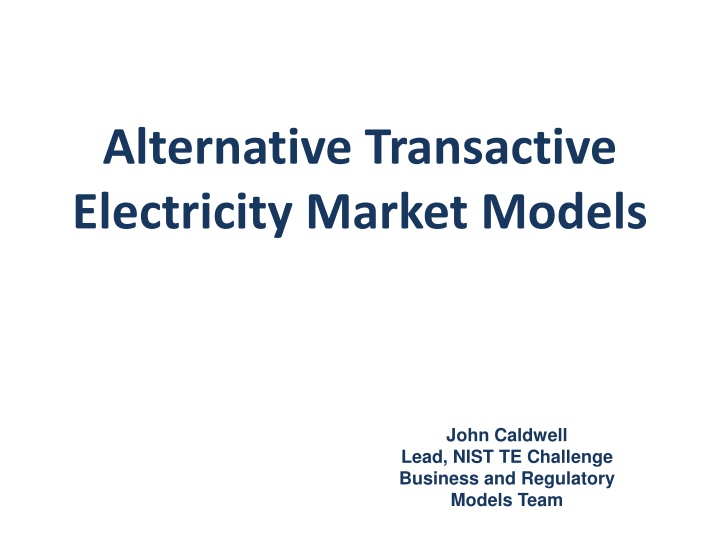
Alternative Transactive Electricity Market Models for Retail Pricing
This content delves into various market structures and models in the transactive electricity market, highlighting the need for systems that facilitate DER services, pricing mechanisms, and efficient allocation of resources while ensuring reliable and affordable electricity delivery. It discusses key aspects such as automated bilateral transactions, peer-to-peer trading, pricing strategies, and future market trends.
Download Presentation

Please find below an Image/Link to download the presentation.
The content on the website is provided AS IS for your information and personal use only. It may not be sold, licensed, or shared on other websites without obtaining consent from the author. If you encounter any issues during the download, it is possible that the publisher has removed the file from their server.
You are allowed to download the files provided on this website for personal or commercial use, subject to the condition that they are used lawfully. All files are the property of their respective owners.
The content on the website is provided AS IS for your information and personal use only. It may not be sold, licensed, or shared on other websites without obtaining consent from the author.
E N D
Presentation Transcript
Alternative Transactive Electricity Market Models John Caldwell Lead, NIST TE Challenge Business and Regulatory Models Team
Four Retail Market Structures Market-Driven Pricing, Programs, & Procurements Automated Bilateral Transactions with Two-Way Subscription Retail Tariff Model-Driven LMP+D Distributed Marginal Prices (DMP)
A TE System Must Provide A method for DER services to be sold to grid and/or traded peer-to-peer A mechanism(s) for pricing products and services A system for communicating price and other information An efficient means of allocating electricity and other services, consistent with grid constraints Appropriate incentives, controls and delegation of responsibilities to ensure that electricity service will continue to be delivered reliably, safely and affordably to all customers
Pricing, Programs and Procurements Current approach in CA and NY grid services that is analogous to that used for DER under non-wires alternatives under FERC 1000 Current Distribution Operational Services Market: Utility purchases distribution grid services from 3rd parties to defer grid capital investments & avoid operating expenses Services sourced either through customer response to time-varying rates and/or services provided under standard offer tariffs, targeted DSM programs or competitive procurements Future Distributed Energy Market: Bilateral energy transactions among DER providers, retail energy services providers, load serving entities and prosumers emerging now But, spot market for residual energy may only emerge when sufficient need & liquidity exists (likely >15 yrs) Unlikely that dynamic constraint management on distribution grid will be needed before 2030 even in CA or elsewhere due to need & cost-effectiveness
Two-Way Subscription Retail Tariff Automated Bilateral Transactions Customers/DER accept long- term subscriptions with DO s and LSE s for energy and distribution transport Two-way transport Tariff recovers more distribution costs when feeders are heavily loaded in either direction Most energy transactions occur at retail/wholesale interface Customer/DER buys/sells incremental power at spot price Structure for Automated Bilateral Transactions with Two-Way Subscription Retail Tariff
LMP+D General Features Derivation of LMP+D Calculate an adder (D) to the wholesale locational marginal price (LMP) D = f {voltage, power quality, line losses, etc.} Calculations are done in real time From example described in M. Caramanis, et. al., Co-Optimization of Power and Reserves in Dynamic T&D Power Markets with Nondispatchable Renewable Generation and Distributed Energy Resources, Proceedings of the IEEE, 2016
Distribution Marginal Price (DMP) Derivation of DMP Use bid-based offers to define short-run DMPs Long-run DMPs = f {incremental customer needs, distribution costs, bulk grid costs} Electricity is purchased and sold at nodal DMP in real time Four Main Components in Distribution Marginal Costs
TE Will Require Viable Business Ecosystem Sufficient participants to provide level of service >= old system Prior level of service provided at cost <= old system (New cost- effective infrastructure fusing power and information) Value of incremental services >= incremental cost to receive; Change in utility regulatory incentives, valuation/planning methods and grid architecture; Market transparency, material information disclosure, and liquidity supported by smart grid technologies
What Will Drive Adoption of a TE System? 1. Aggressive clean energy goals/policies integrated into electricity system 2. DER market penetration strains capability of utility to manage DER under existing system 3. Commitment by regulators/legislators 4. Workable/comprehensible/affordable roadmaps for implementation 5. Grassroots TE development (e.g., microgrids, consumer behavior, information sharing protocols) 6. Somebody else actually does it!!!


